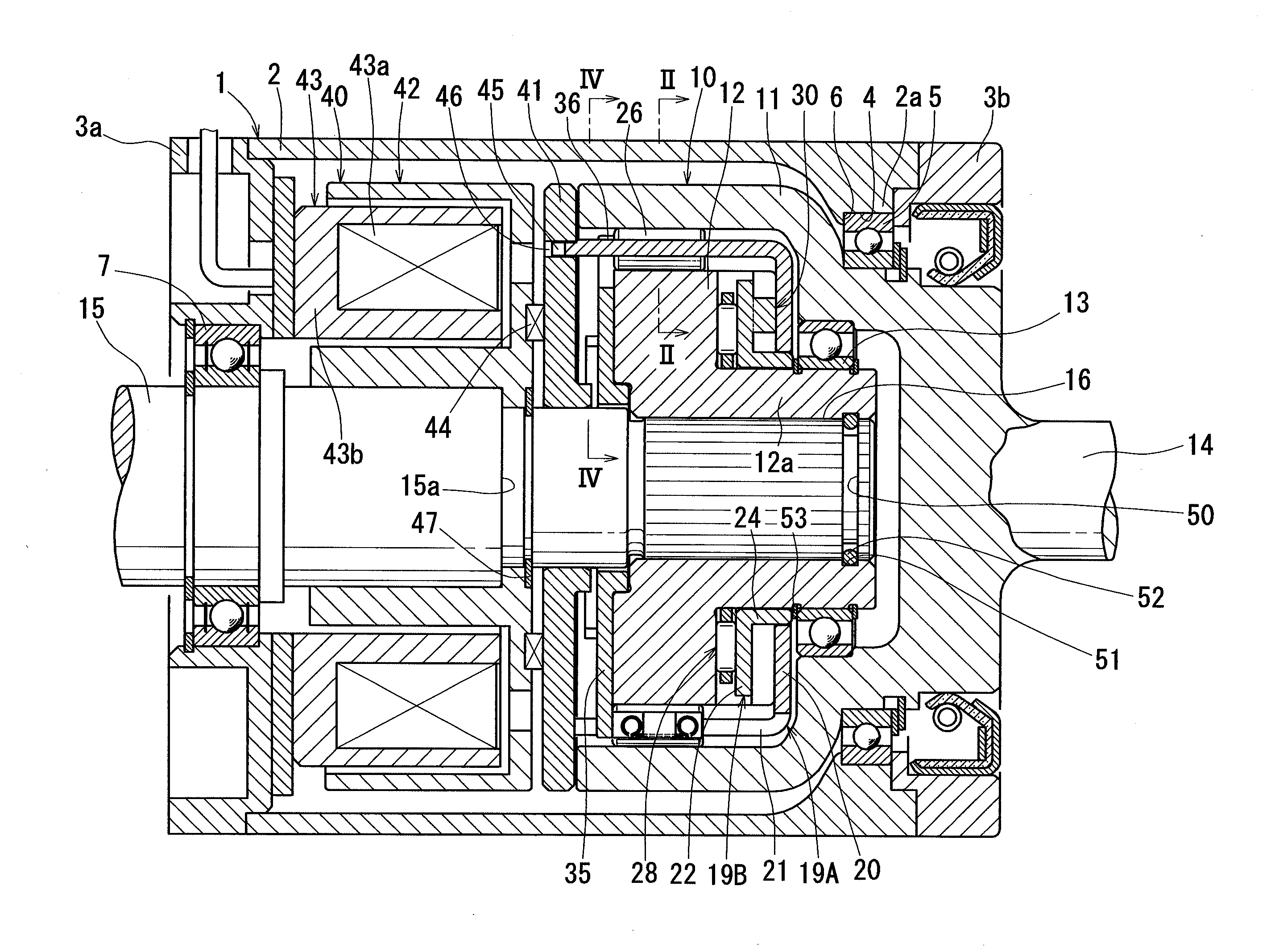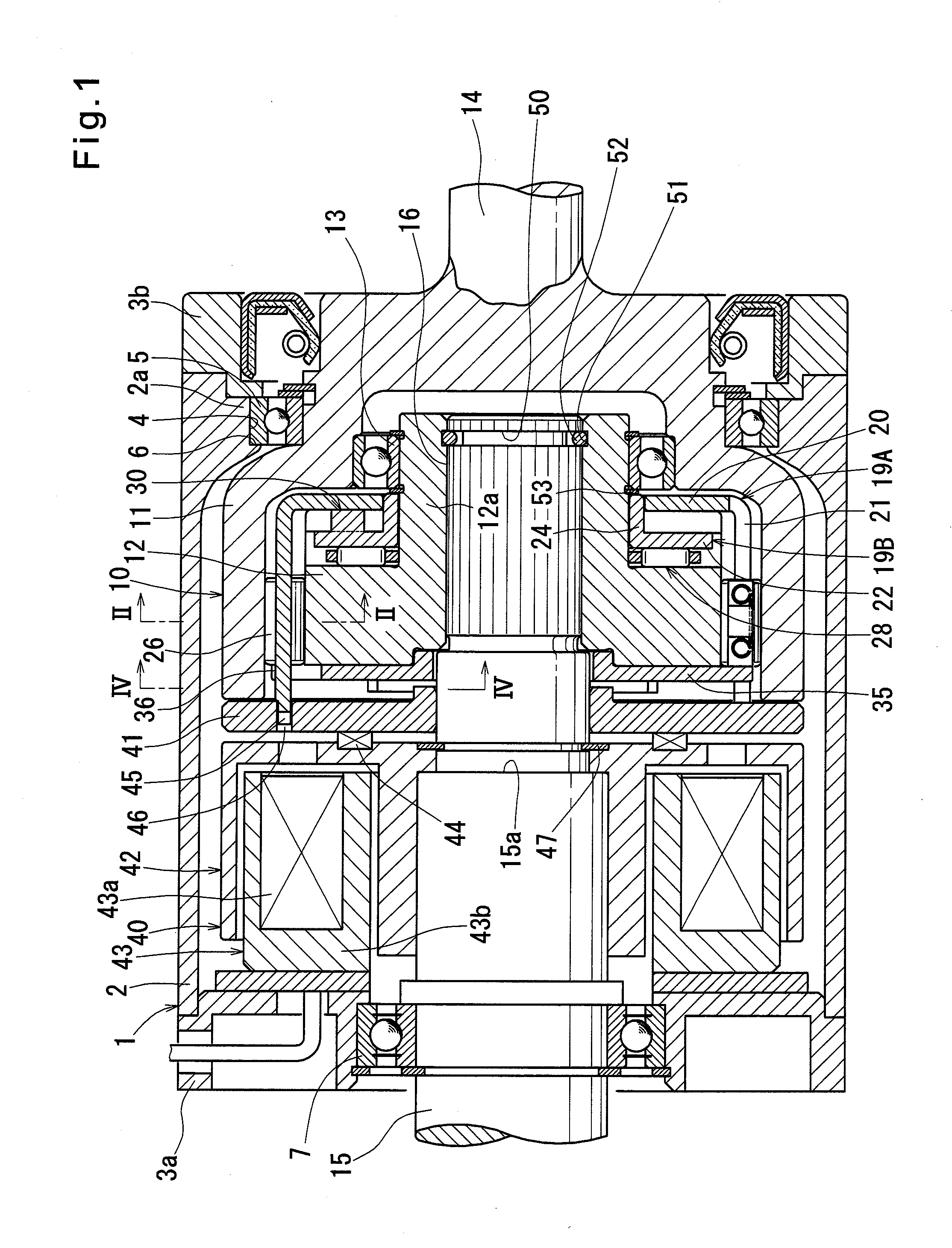Rotation transmission device
a transmission device and rotational direction technology, applied in the direction of mechanical actuated clutches, bearing unit rigid support, interlocking clutches, etc., can solve the problems of inability to completely eliminate such rollers tend to get engaged in errors, and the two-way clutch cannot be idled with high reliability, so as to minimize play in the rotational direction, and increase the circumferential width of the pockets
- Summary
- Abstract
- Description
- Claims
- Application Information
AI Technical Summary
Benefits of technology
Problems solved by technology
Method used
Image
Examples
first embodiment
[0123]Now the operation of the rotation transmission device of the first embodiment is described. FIG. 1 shows the state in which the electromagnetic coil 43a of the electromagnet 43 is off and thus the armature 41 is separated from the rotor 42 by the separation spring 44. In this state, the two-way roller clutch 10 is engaged, with its opposed pairs of rollers 26 kept in engagement with the cylindrical surface 17 of the outer ring 11 and the cam surfaces 18 of the inner ring 12, as shown in FIG. 2(I).
[0124]With the two-way roller clutch 10 engaged, when the electromagnetic coil 43a is energized, attraction force acts on the armature 41 and axially moves the armature 41 until it is pressed against the rotor 42.
[0125]Since the armature 41 is fixedly coupled to the bridges 21 of the control retainer 19A, when the armature 41 moves axially, the control retainer 19A moves in the direction in which its flange 20 moves toward the flange 22 of the rotary retainer 19B.
[0126]When the retain...
second embodiment
[0153]FIGS. 13 to 17 show the rotation transmission device according to embodiment of the present invention. As with the rotation transmission device of FIG. 1, this embodiment includes a two-way roller clutch 2 mounted in a housing 1, and an electromagnetic clutch 40 also mounted in the housing 1 for selectively engaging and disengaging the two-way roller clutch 10.
[0154]As with the two-way roller clutch 10 of the first embodiment, the two-way roller clutch 10 of the second embodiment includes a retainer 80 mounted between the cylindrical surface 17 on the inner periphery of an outer ring 11, and the cam surfaces 18 on the outer periphery of the inner ring 12.
[0155]The retainer 80 is a cylindrical member having radially inwardly extending flange 80a and 80b at both ends thereof, and formed with pockets 81 facing the respective cam surfaces 18. Mounted in each pocket 81 are an opposed pair of rollers 26 and a plurality of coil springs 27 biasing the pair of rollers 26 away from each...
PUM
 Login to View More
Login to View More Abstract
Description
Claims
Application Information
 Login to View More
Login to View More - R&D
- Intellectual Property
- Life Sciences
- Materials
- Tech Scout
- Unparalleled Data Quality
- Higher Quality Content
- 60% Fewer Hallucinations
Browse by: Latest US Patents, China's latest patents, Technical Efficacy Thesaurus, Application Domain, Technology Topic, Popular Technical Reports.
© 2025 PatSnap. All rights reserved.Legal|Privacy policy|Modern Slavery Act Transparency Statement|Sitemap|About US| Contact US: help@patsnap.com



